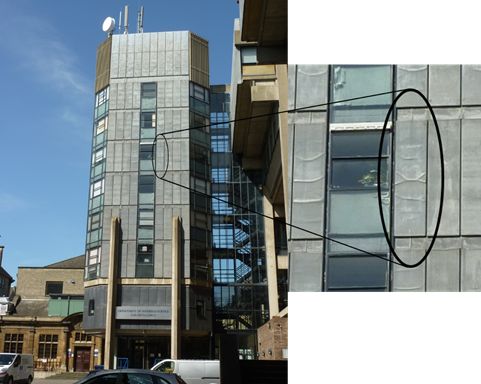Creep
At high temperature, materials might permanently deform over time even below their yield stress. This is due to the fact that dislocation climb or cross slip (dislocations migrating to a different slip plane) and diffusion of atoms become easier at high temperatures. This behaviour is known as creep.
Creep is defined as time-dependent permanent deformation (i.e. plastic, not elastic) of a material under the action of an applied stress \( \sigma_{\rm{applied}} \), the magnitude of which is less than the macroscopic yield stress \( \sigma_{\rm{y}} \).
Creep rate depends on:
- the material
- the applied stress
- the temperature: standard creep behaviour is seen at \( T \)> 0.3 \( T_{\rm{m}} \) for pure metals, at \( T \)> 0.4 \( T_{\rm{m}} \) for alloys and ceramics. \( T_{\rm{m}} \) stands for the melting temperature).

Figure 12. Movement of ice in a glacier as an example of creep (Beagle Channel) (Wikicommons)

Figure 13. Creep of lead in the infrastructure of the former site of MSM, Cambridge
Creep is an important mechanical behaviour to consider for components subjected to high stresses for long periods of time at elevated temperature, for example jet engine turbine blades. See Creep Deformation of Metals TLP to explore creep in more detail.

